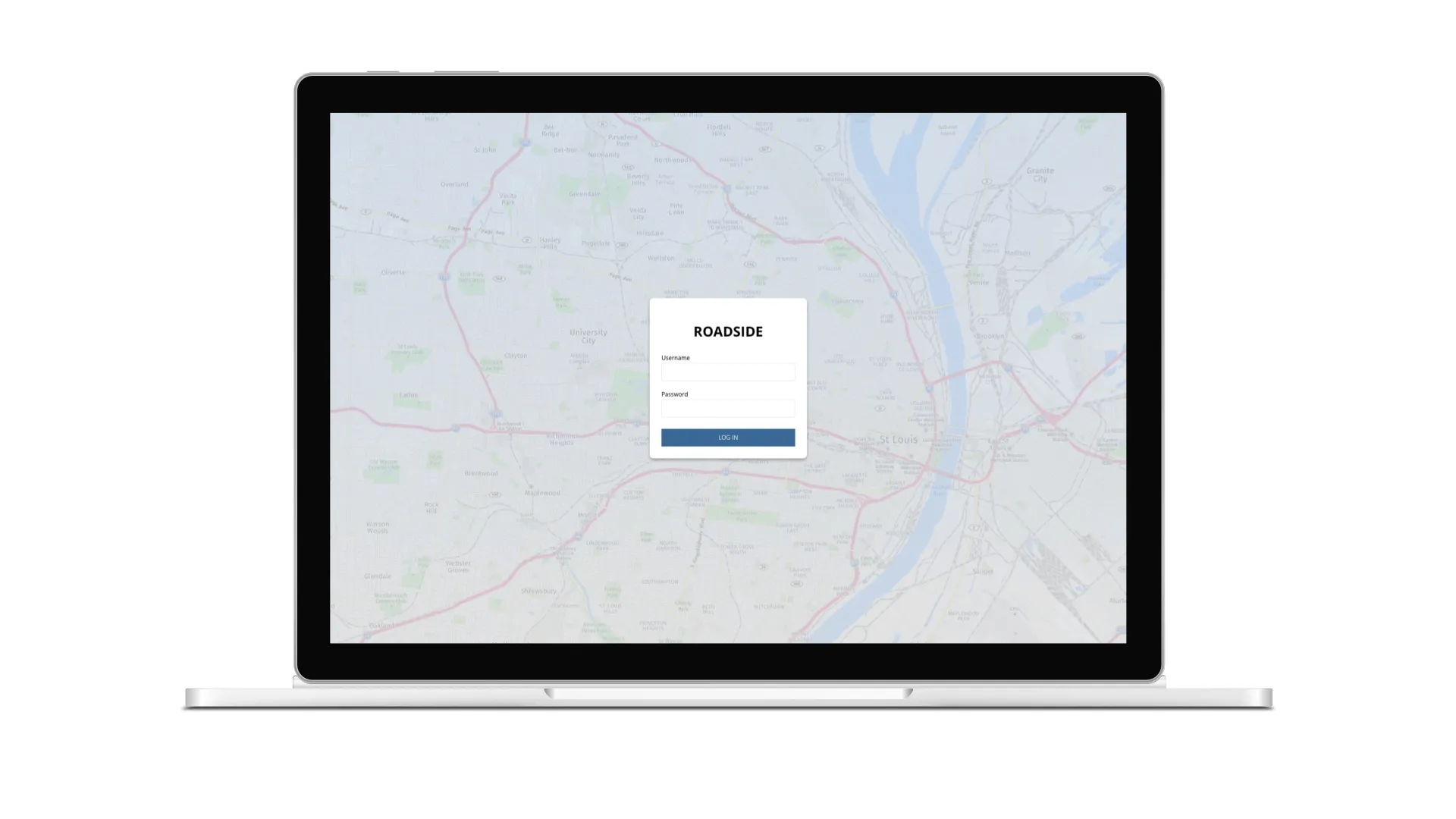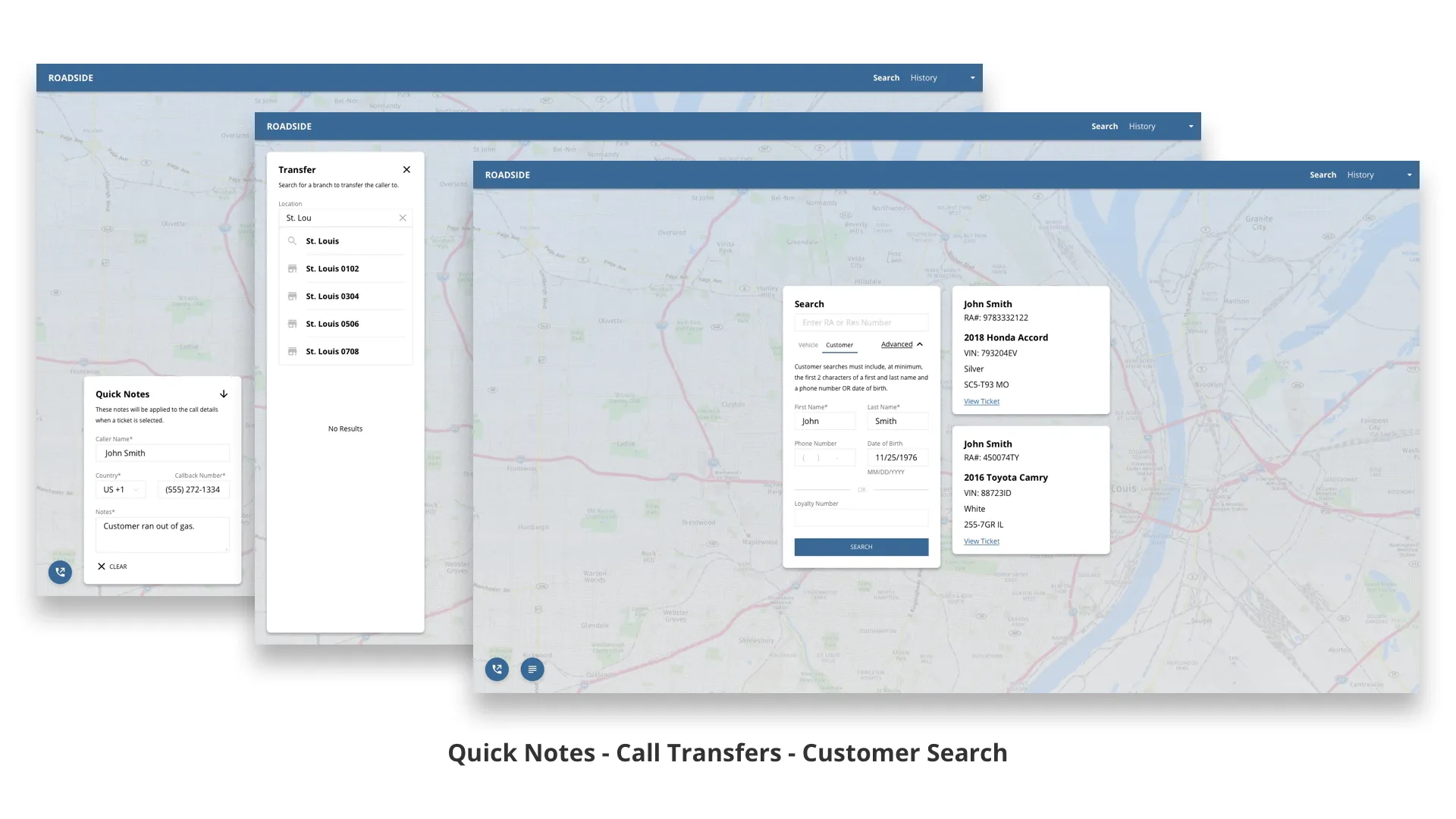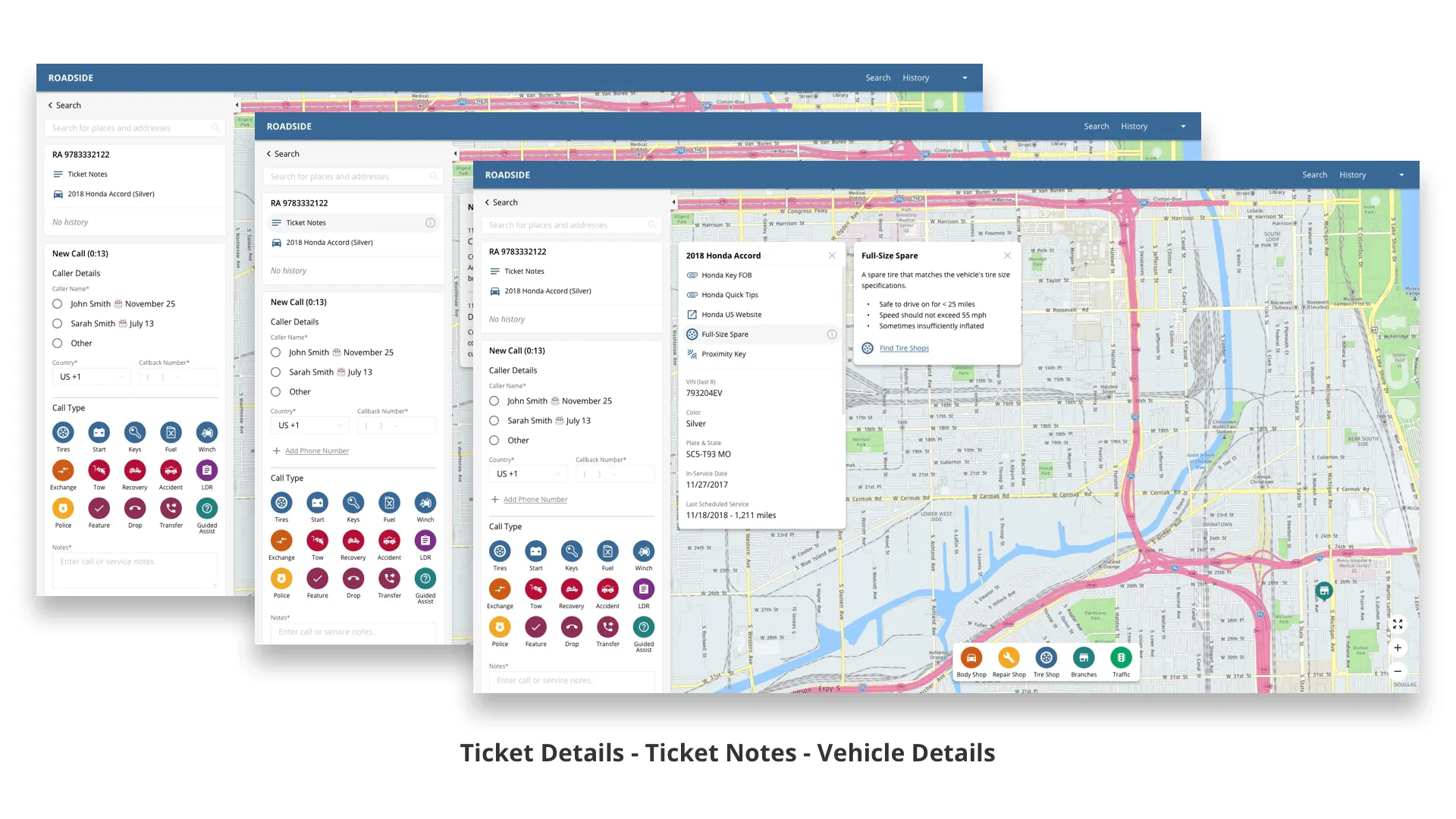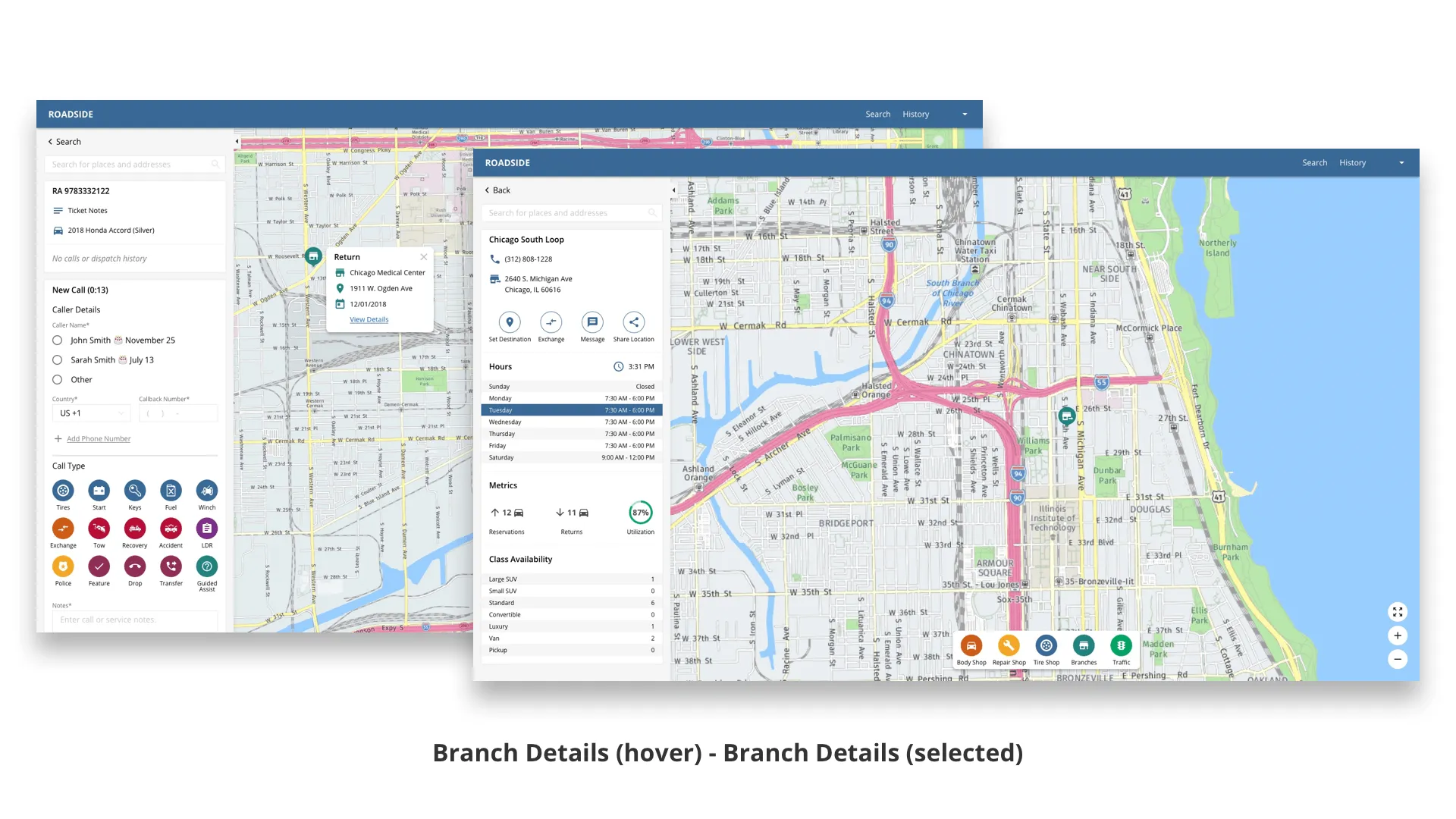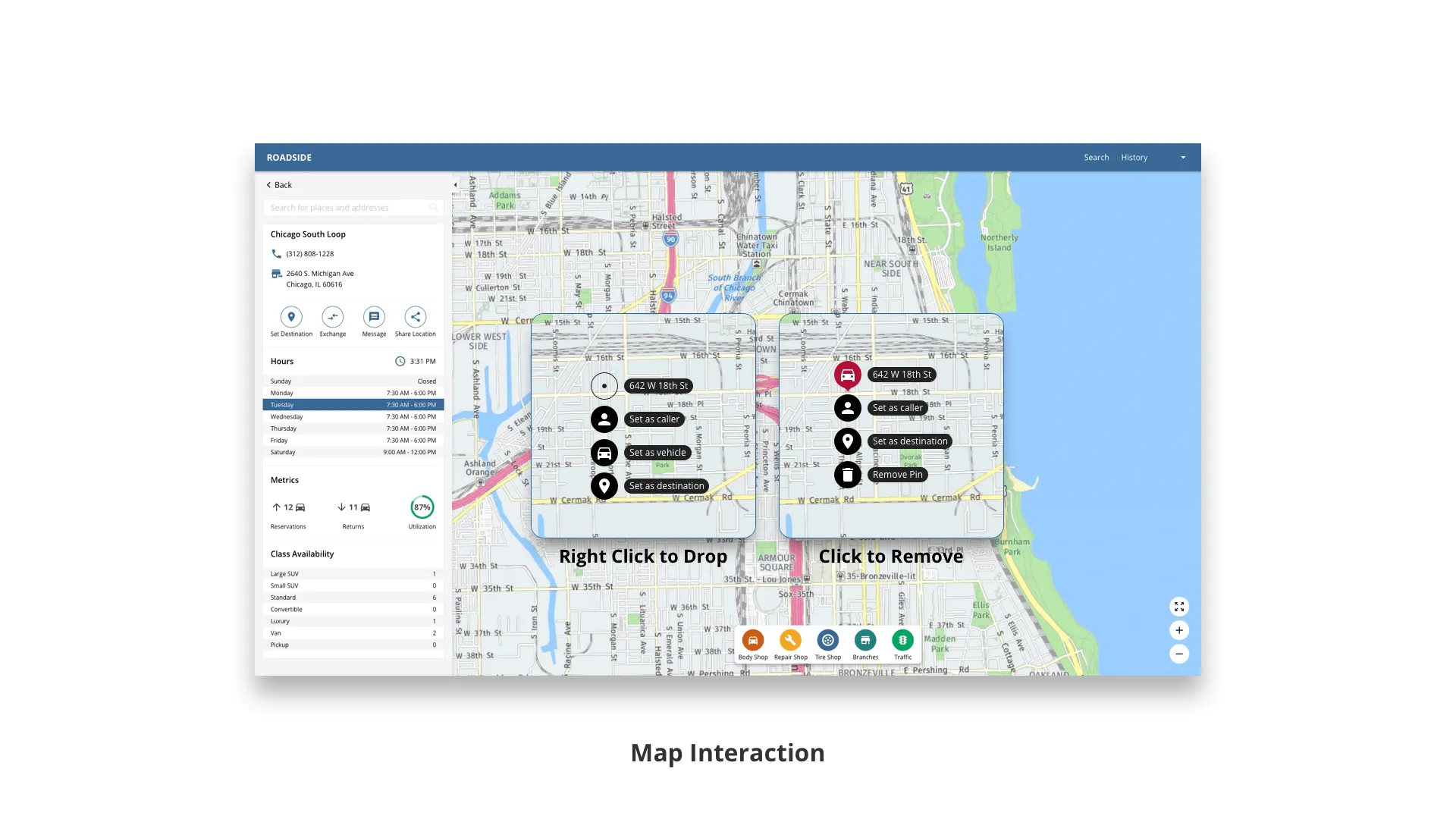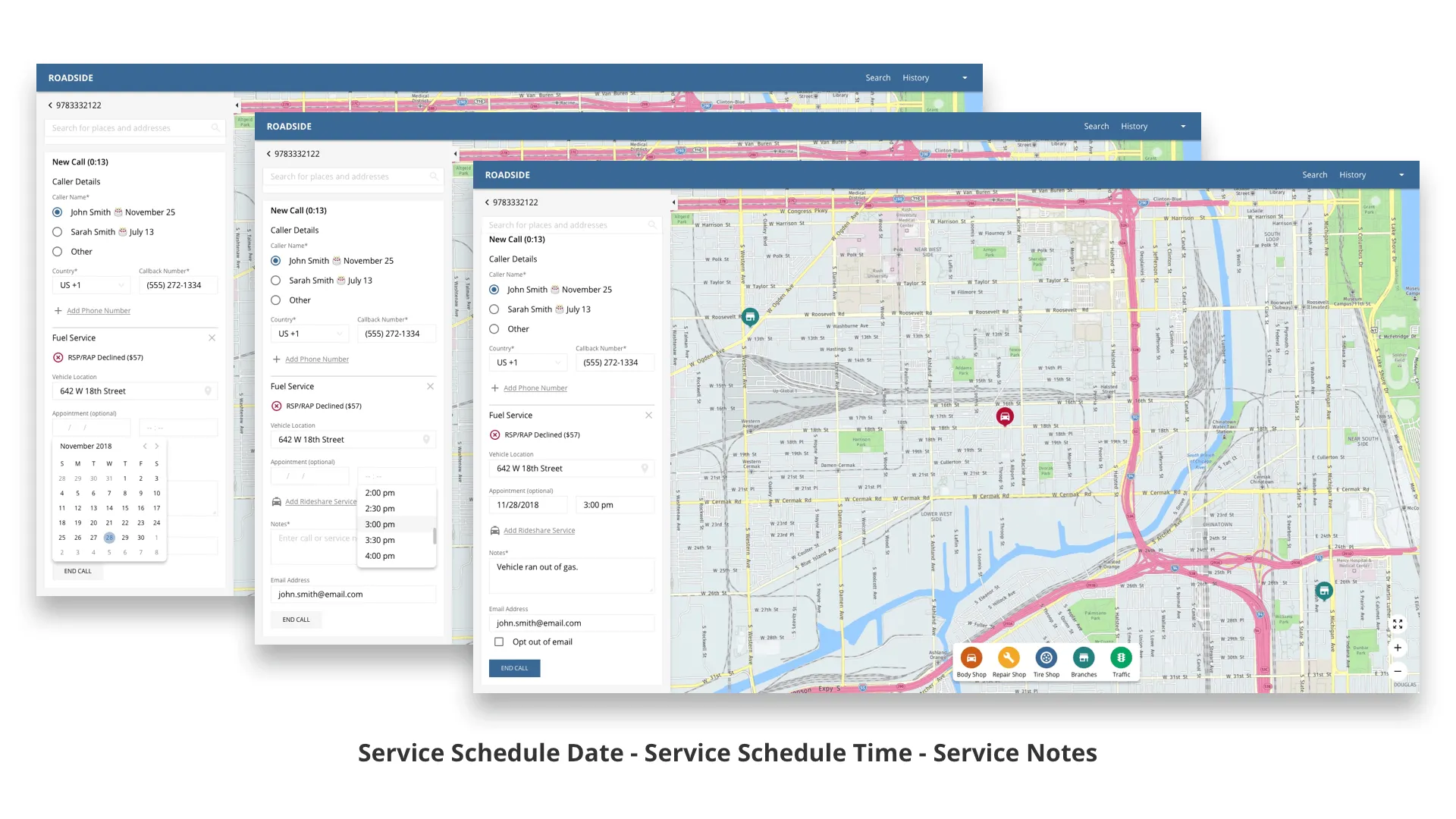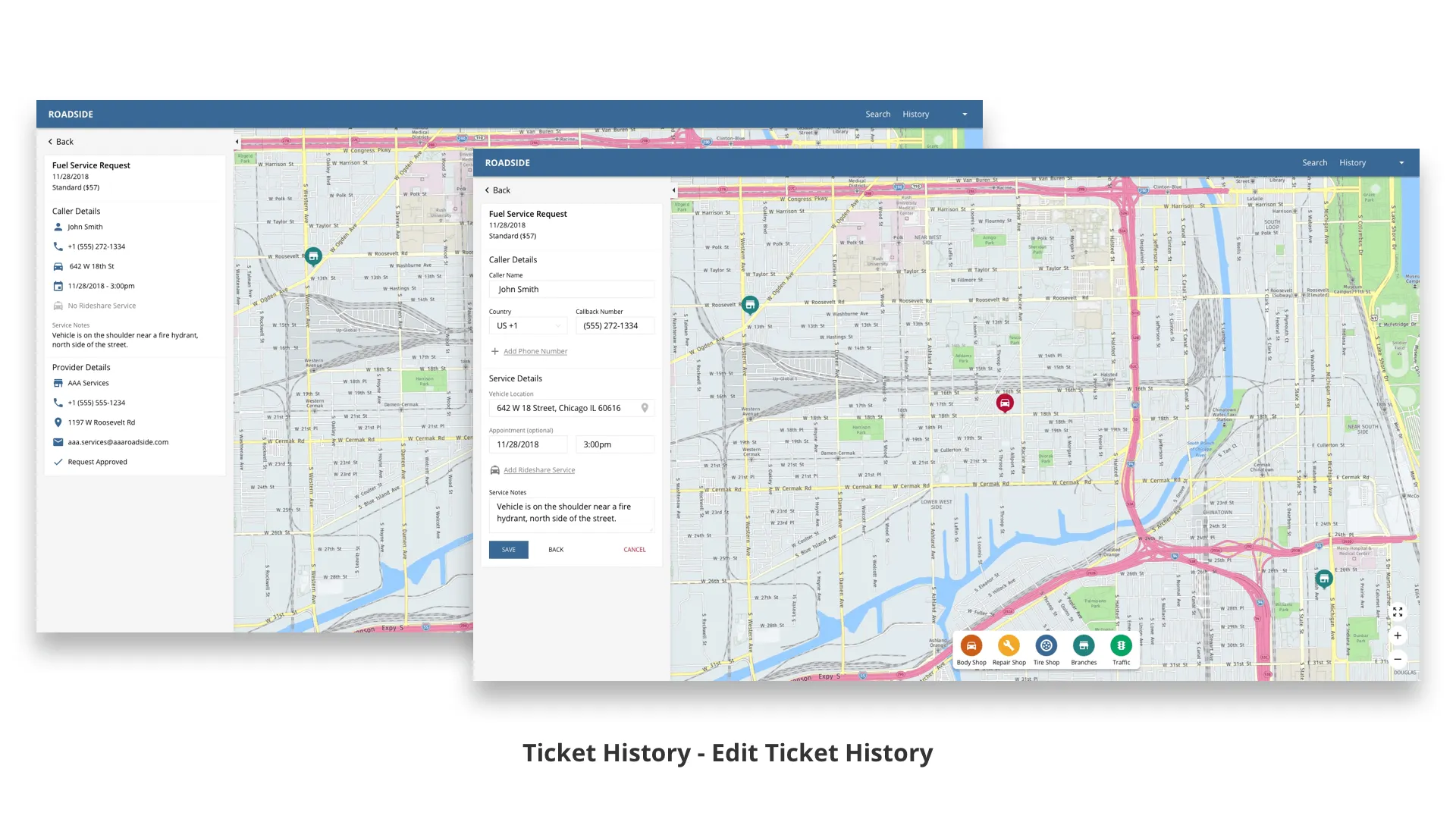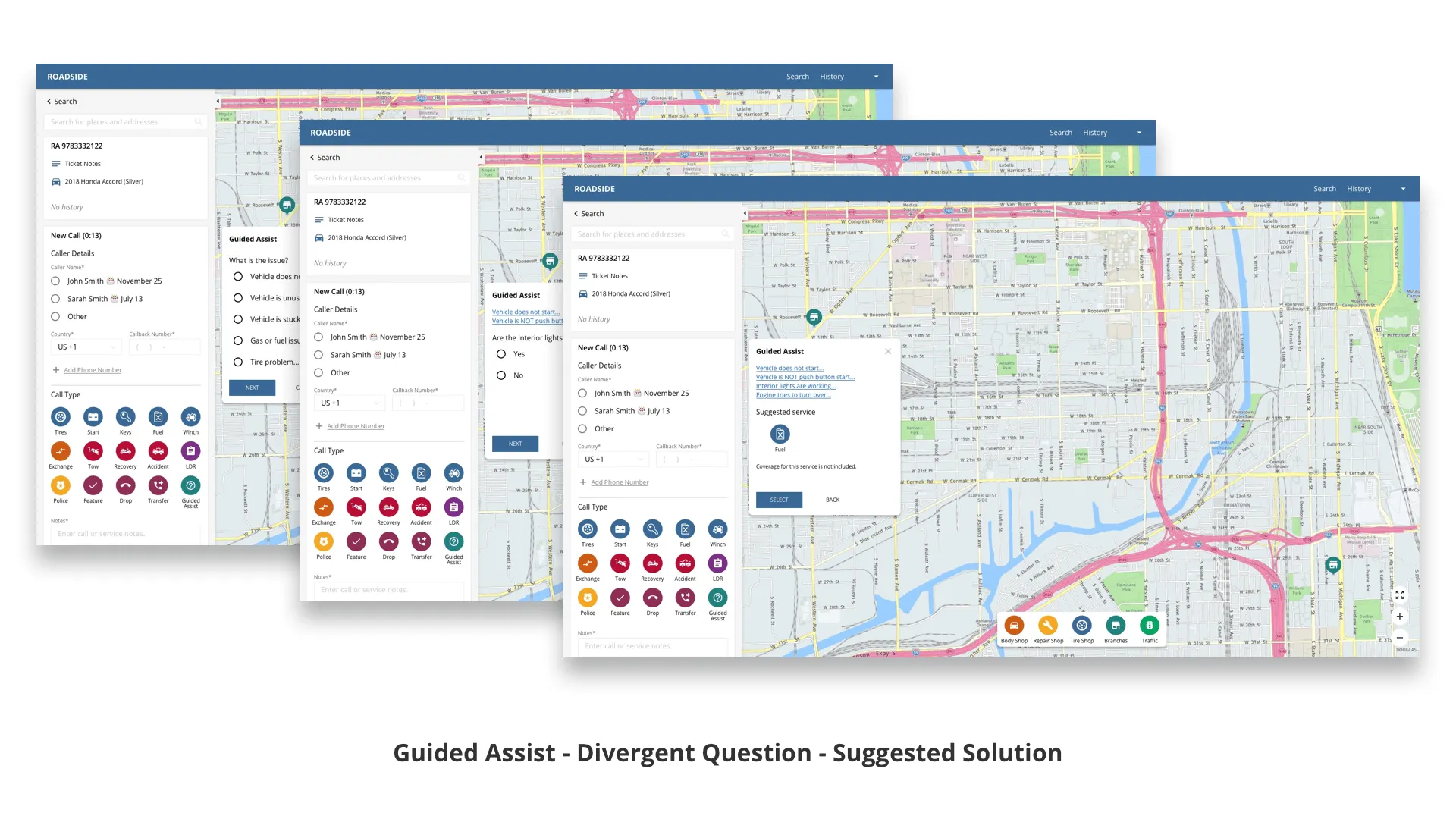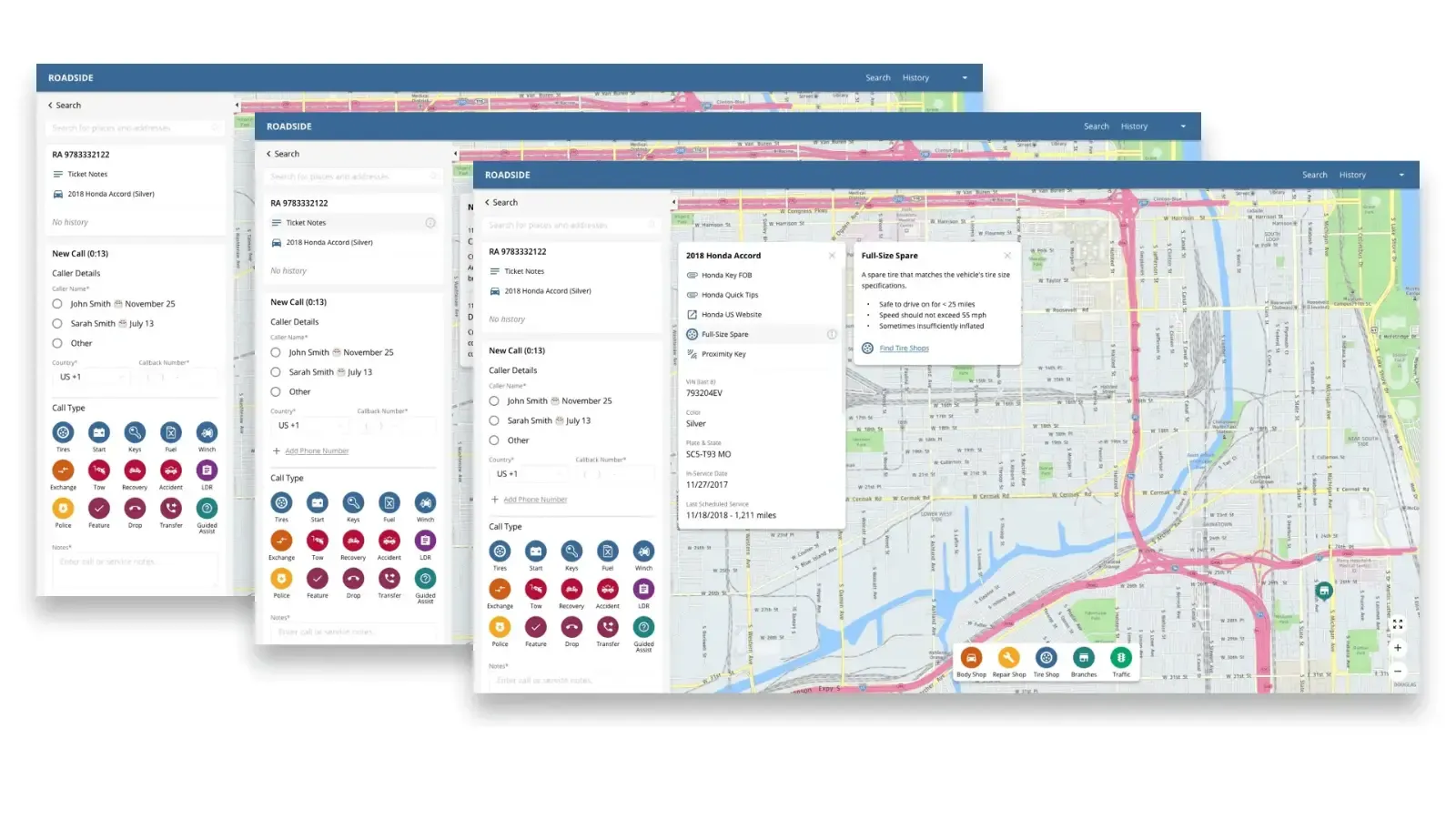Roles:
Technology:
Brief
Reduce support costs for Enterprise Holdings (the rental car company) by designing a new customer service app that allows them to move to internal call centers.
Strategy
After shadowing existing call center users, the game plan was to build a Google Maps-styled power app that let agents drop pins and find nearby points of interest (tire shops, tow trucks, rental branches, etc.). Users also needed a quick note capability for capturing customer details at any point in the call.
Challenges
The app needed to balance geo-spatial data and support content, backed by a CDN. As part of the interface we added a support wizard that would guide call center agents through common problem scenarios without making them leave the map interface.
Outcomes
The app got the name “Hero” and helped support users load rental details, find the customer on a map, and identify the nearest solution to their problem.
The call center is live and being actively used for roadside problems. Coolfire’s client passed on feedback from a training session with new workers:
We got some rave reviews today in the training class... 'I’ve worked at a lot of Contact Centers, and in a lot of systems, and this is the best system I’ve worked in. It’s very smooth and user friendly.'
Samantha T.
Sr. Product Manager at Enterprise
